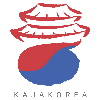Korean Lessons ᚛ Level 1 - My First Steps in Korean (Lessons 1 to 30) ᚛ Lesson 12 - The Verb ‘To Be’
The Verb ‘To Be’
Let’s go! After this course, you will be able to create your first sentences in Korean!
The different forms of 이다
We are going to talk about 이다, which corresponds in English to the verb ‘to be’ when describing something. I specify “describing” because it is the verb ‘to be’ in the sense of describing something and relating two elements, as in “I am a student” where one associates “I” with “student”.
Therefore, the verb 이다 does not express the verb to be "of presence" - as in "I am at the cinema" which indicates a place.
As we saw in the course on structure of a sentence in Korean, 이다 will be positioned at the end of the sentence and will change form depending on the degree of politeness of the sentence. Furthermore, its form can also vary slightly depending on whether the word that precedes it ends in a consonant or a vowel.
이다 is conjugated as such in the present tense:
|
Style |
After a consonant |
After a vowel |
|
Casual |
이야 |
야 |
|
Polite |
이에요 |
예요 |
|
Formal |
입니다 |
|
이다 is a rather special verb in Korean, and is not always considered a verb since it is the only one that behaves like a particle. It's special because it will be attached directly after the word that precedes it, without spaces (unlike other verbs as we will see later).
Although after a vowel, in the polite present tense, 이다 is conjugated 예요, Koreans tend to pronounce it [에요].
Examples of using 이다
김민지예요.
→ I am Kim Minji. (in polite style)
The name 김민지 ends in the vowel ㅣ. In polite style, it is therefore appropriate to use 예요.
- in the casual style: 김민지야.
- in the polite style: 김민지예요.
- in the formal style: 김민지입니다.
Note: To focus on the use of 이다, the examples are intentionally very simplified. We will see this in more detail in the following lessons, but in Korean the presence of a subject or a personal pronoun is very often optional. So, without context, the previous sentence could have been translated as “You are Kim Minji. or “It’s Kim Minji. ". However, it is possible to specify when necessary:
저는 김민지예요.
→ I am Kim Minji.
그분은 김민지예요.
→ This person is Kim Minji.
These concepts will be discussed later.
박재현이에요.
→ I am Park Jaehyeon. (in polite style)
The name 박재현 ends with the consonant ㄴ. In polite style, it is therefore appropriate to use 이에요.
- in the casual style: 박재현이야.
- in the polite style: 박재현이에요.
- in the formal style: 박재현입니다.
개야.
→ It's a dog. (in casual style)
The word 개 (= dog) ends in the vowel ㅐ. In the casual style, it is therefore appropriate to use 야.
- in the casual style: 개야.
- in the polite style: 개예요.
- in the formal style: 개입니다.
프랑스 사람입니다.
→ I am French. (in formal style)
In the formal style, it does not matter whether the word preceding 이다 ends in a consonant or a vowel. In all cases, 입니다 is attached to the noun.
- in the casual style: 프랑스 사람이야.
- in the polite style: 프랑스 사람이에요.
- in the formal style: 프랑스 사람입니다.
Exercises
Learn more
Traveling to South Korea can be an unforgettable experience. But when you don’t speak Korean, everything gets more complicated: ordering in a restaurant or café becomes stressful, you can’t understand signs or directions, asking for help in case of trouble is nearly impossible, and most importantly, you miss out on the very essence of a successful trip to Korea: connecting with the locals.
Since English - Korean machine translators can’t always be trusted (the two languages work in completely different ways), it’s essential to prepare yourself in advance to fully enjoy your trip to South Korea!
Learn more

